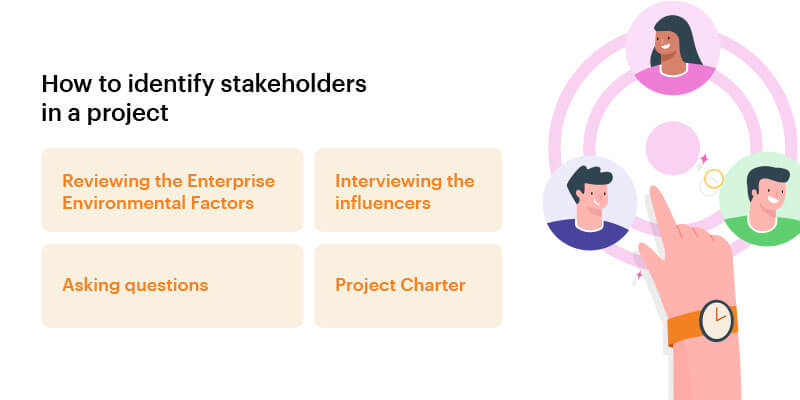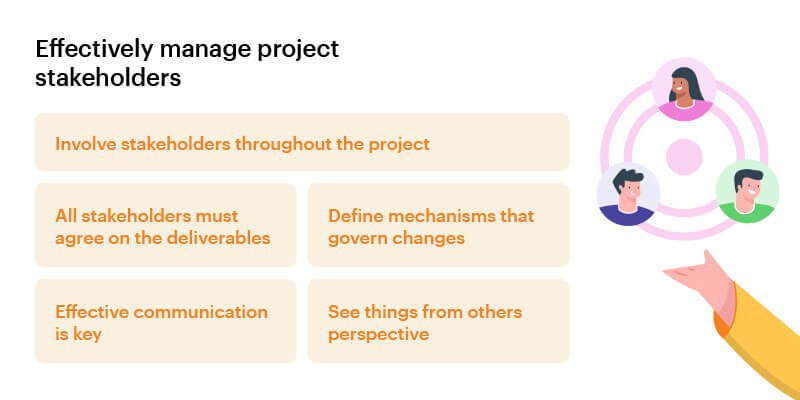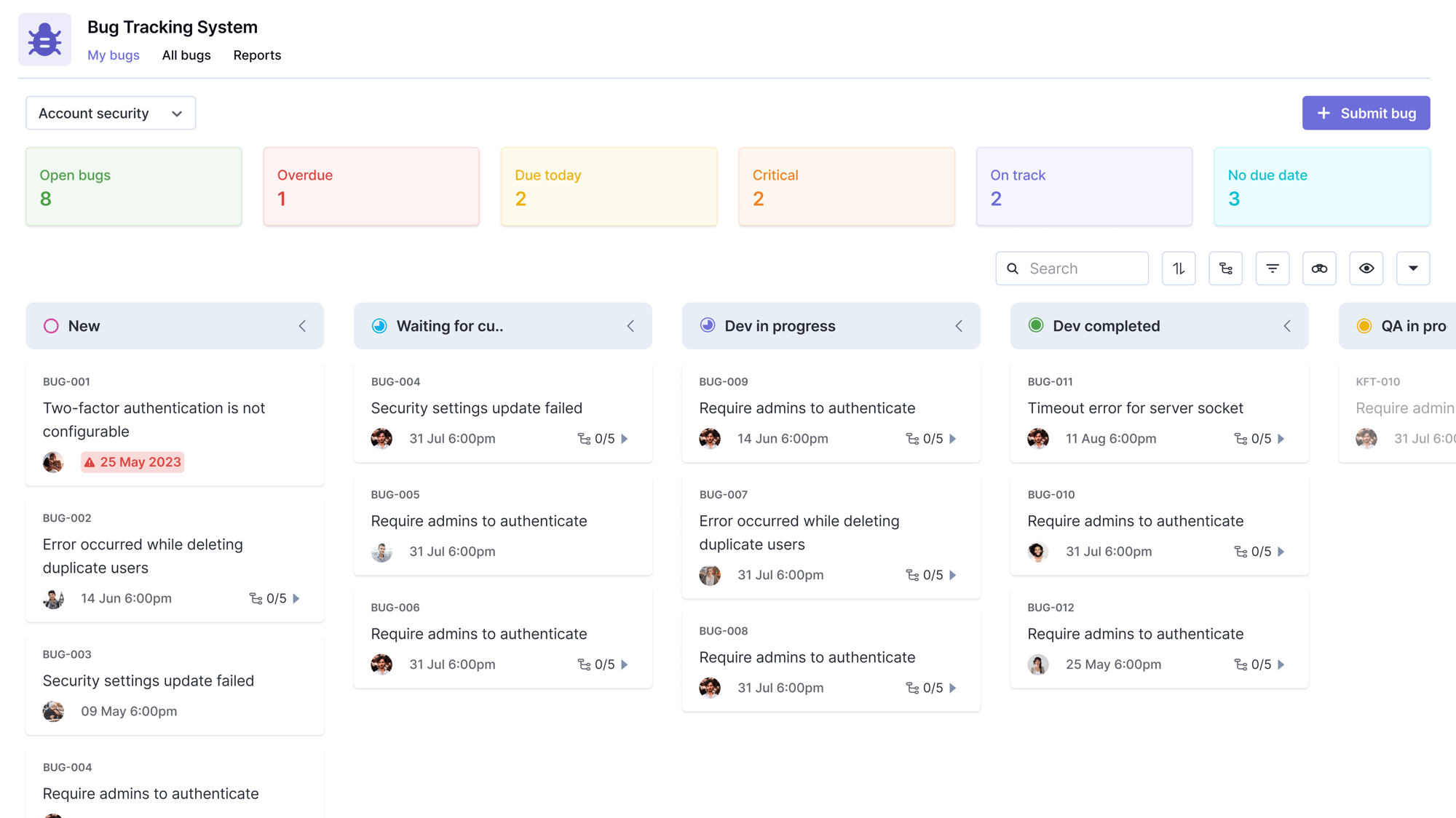Project stakeholders are probably the most critical people who play a role in your project’s success. As a project manager, it’s important to communicate with them effectively, get their feedback, and ensure they’re happy with the outcome of the project. They aren’t called stakeholders without a reason, yes?
Who are project stakeholders?
Project stakeholders are any group of people that can have an influence or can be influenced by the project. In other words, they have a stake in the project. After completion, whether the project failed or succeeded depends on how much the stakeholders are satisfied.
This is why stakeholders are very critical for any project’s completion and identifying and managing them is key for your project’s success.
What are the two types of project stakeholders?
Project stakeholders can be broadly categorized into two ways:
.jpg)
See how Kissflow delivers the fastest time-to-value in the market
1. Internal stakeholders
These individuals or organizations are involved in the project from within the organization. They include (but are not limited to):
- The project team: They are a group of individuals who work on the project to ensure its execution.
- The project manager: The project manager has the responsibility of project planning, procuring, and executing the project.
- The sponsor: Project sponsors own the project and ensure the provision of resources for the project. They hold responsibility for the project.
- Internal teams: Other teams can use the outcome of the project. For example, the sales team.
2. External stakeholders
External stakeholders are affected by the project’s outcome even though they are not involved in the project directly. They can include:
- The external clients
- The end-user
- The subcontractors
- The government
- The supplier
- The community

Want to learn project management but put off by jargon?
Learn what's important in the simplest ebook for non-project managers.
Download NowWhy project stakeholders are important?
As mentioned earlier, any project’s success depends on the satisfaction of the stakeholders. Understanding the needs and expectations of stakeholders is very important for successful project execution. The role of stakeholders in project management is important because of the following reasons:
They bring experience to the table
Stakeholders often provide invaluable expertise about the project. They have a sound understanding of the relevant process and how things work in the industry. Based on their experience, they can provide clear deliverables and identify project constraints that the project managers might not be aware of.
They help identify risks
The only way to mitigate risks is to first identify them. This is where stakeholders can offer valuable insights. They might raise concerns at the beginning of the project and might want to discuss potential risks. Identifying project risks at the beginning can allow you to prepare accordingly and prepare contingency plans.
They help increase the chances of success
Engaging with stakeholders helps to have a clear view of the project expectations right from the start. It also helps keep them on the same page regarding their expectations of the project, especially as the project progresses. Taking continuous input from stakeholders might increase their interests and stakes in the project. This can increase the chances of the project’s success dramatically.
Discover how Kissflow's low-code platform
How to identify stakeholders in a project
There has to be a significant effort toward identifying project stakeholders early on. This involves prioritizing stakeholders according to their vested interests in the project as well as their overall impact and influence on the project. The process of identifying stakeholders ideally starts when your sponsor approves the project charter.

There following documents and techniques can help you identify the stakeholders:
1. Project Charter
This document normally identifies the project head, key sponsors, clients, and influencers. The project charter can provide useful insights for identifying the stakeholders.
2. Reviewing the Enterprise Environmental Factors
The enterprise environmental factors (EEF) may involve factors such as competition, the company’s structure, and industry standards. Reviewing these factors can help you identify the stakeholders.
3. Interviewing the influencers
Interviewing the project management experts and key influencers is also instrumental in identifying the key stakeholders.
4. Asking questions
Brainstorming sessions between the project team members and experts are a great way of getting the stakeholders involved. For getting a clearer picture, try answering these questions:
- Who are this project’s shareholders?
- Who is involved in the project? Directly or indirectly.
- Who gains if the project is successful?
- Who are the suppliers?
- Who can accept or reject the project?
- Who might be affected by the project’s outcome?
Answering questions like these can go a long way in successfully identifying your project’s stakeholders.
5 Tips to effectively manage project stakeholders
Managing all the different stakeholders is perhaps the most critical part of your project. It is a project in and of itself. Managing stakeholders effectively will be an ongoing sub-project within your main project and you can’t afford to make mistakes here.

Here are the five ways which can help toward efficient management of project stakeholders:
1. Involve stakeholders throughout the project
Identify the stakeholders early on along with their types and create a stakeholder management plan. Engage them with interviews and questionnaires from time to time. If the stakeholders are external, add them to your project dashboard so they get a real-time view of the progress. They should also be able to provide feedback for the project deliverables.
2. All stakeholders must agree on the deliverables
Right from the start, all project stakeholders should be on the same page regarding the deliverables of the project. It is crucial to establish people’s roles and responsibilities as clearly as possible to avoid any confusion in the later stages of the project. Doing so is the best way to avoid project failure, delays, and cost overruns.
3. Define mechanisms that govern changes
Change requests are a common occurrence in complex projects. Many requirements defined in the earlier phases of the project might need to be revisited later. A pre-defined way of handling change requests is extremely important. Otherwise, issues like scope creep might affect your performance and reduce the productivity of your team.
4. Effective communication is key
Meaningful and valuable communication in project management is vital for the project’s success. The frequency of communication is also important and should be selected according to the involvement and interest of a particular stakeholder. Maintaining a stakeholder register from the initiating phase is one of the many proven ways of determining the frequency and method of communication for each stakeholder.
5. Try to see things from their perspective
Part of managing the stakeholders is to visualize the situation from their standpoint. You need to understand what each stakeholder signed up for and what are their specific contexts. If you can relate to their perception about how the project impacts them, you can be better prepared to manage them and their expectations.
Final thoughts
Stakeholders have a defining role in any project because they can negatively and positively influence it. Therefore, it’s essential for the project’s success that you can recognize your project stakeholders and understand their expectations during project initiations.
Identifying the stakeholders is the first step toward effectively managing them and using them to steer the project towards successful execution.
Learn More About Kissflow’s Low-Code Platform and its benefits
Your search for Project Management has landed you here. Wondering why?
As a user, you'll experience the full value of Kissflow by implementing it across departments for diverse use cases rather than just addressing isolated needs like a project management tool for a single team or department.

%20(2).png?width=2000&name=PSE%20Dashboard%20(3)%20(2).png)
.png?width=2000&name=Dashboard%20(5).png)





